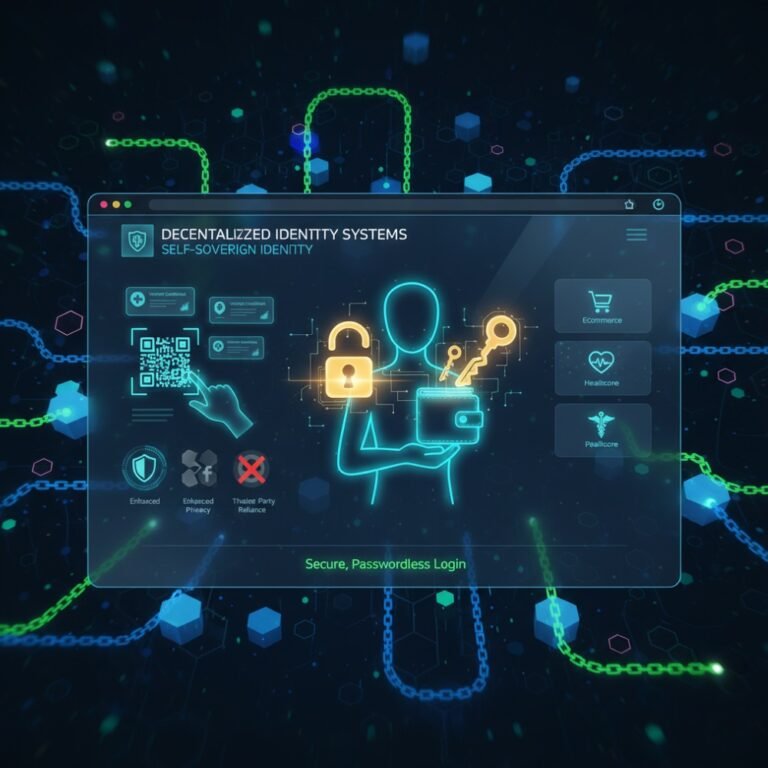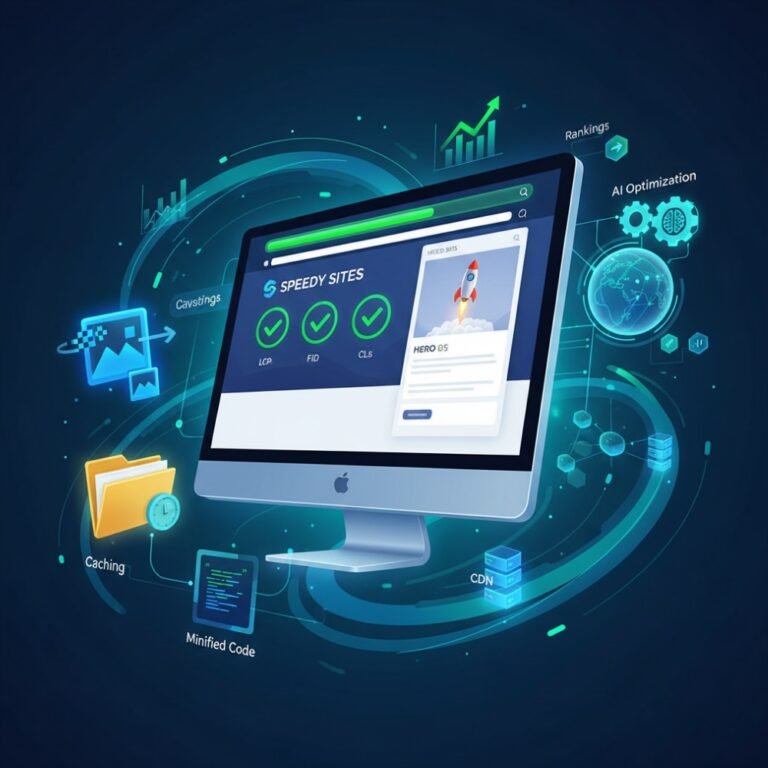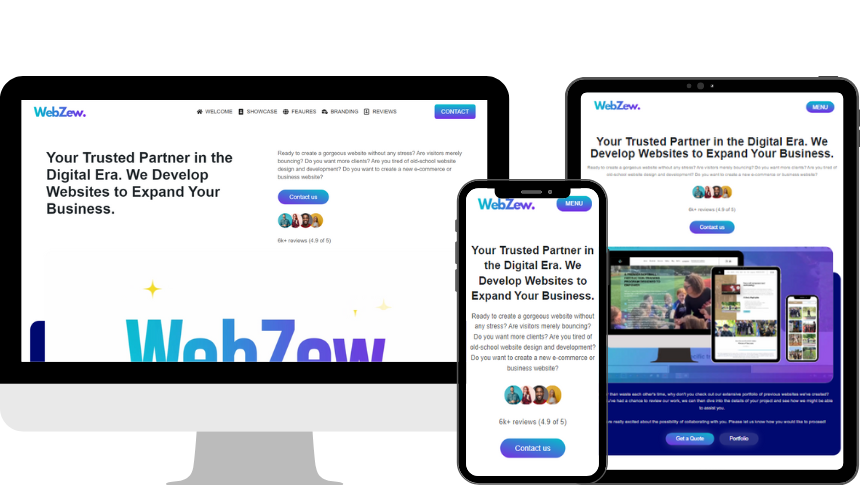Have you ever wondered what happens when the power of quantum mechanics meets the scalability of cloud computing? In 2025, this fusion is no longer science fiction—it’s a reality that’s transforming how developers experiment with groundbreaking algorithms. Cloud-based quantum computing developer tools are democratising access to quantum resources, allowing anyone from startups to researchers to tinker with qubits without needing a multimillion-pound lab.
Whether you’re a seasoned programmer dipping your toes into quantum SDKs for developers or a curious beginner exploring quantum simulators online, these platforms offer an entry point into a world where computations happen at unprecedented speeds. But let’s not get ahead of ourselves. In this article, we’ll break down everything you need to know about cloud quantum tools, from the basics to advanced use cases, all while sprinkling in practical tips and real-world examples. By the end, you’ll be equipped to start your own quantum journey.
Introduction to Cloud Quantum Computing
What is Quantum Computing?
Quantum computing isn’t just faster computing—it’s a paradigm shift. Traditional computers use bits that are either 0 or 1, but quantum computers leverage qubits, which can exist in multiple states simultaneously thanks to superposition. Add in entanglement, where qubits link up to influence each other instantly, and you’ve got the potential to solve complex problems that would take classical supercomputers eons.
For instance, imagine factoring large numbers for cryptography or simulating molecular interactions for drug discovery. These are tasks where quantum shines. As of 2025, quantum computers are still in their nascent stage, with systems boasting hundreds of qubits rather than the millions needed for full-scale advantage. But cloud platforms make this technology accessible, letting developers run experiments remotely.
How Cloud Technology Integrates with Quantum Computing
Cloud integration bridges the gap between fragile quantum hardware and everyday developers. Quantum systems require cryogenic temperatures and isolation from noise, making on-site setups impractical. Cloud providers host these machines in specialised data centres, exposing them via APIs and SDKs.
This means you can write code in familiar languages like Python, submit jobs to a quantum backend, and retrieve results—all through the cloud. It’s like accessing a supercomputer from your laptop, but with quantum twists. Semantic keywords like quantum development kits (QDKs) come into play here, as platforms bundle tools for seamless integration.
Benefits of Accessing Quantum Computers via the Cloud
Why go cloud? Accessibility tops the list. No need for hefty investments in hardware; pay-per-use models keep costs low. Scalability is another win—you can simulate circuits on classical computers before queuing for real quantum runs.
Collaboration thrives too, with shared environments fostering team-based development. Plus, regular updates from providers ensure you’re always using the latest advancements. In 2025, this has accelerated innovation, with quantum cloud services comparison showing widespread adoption across industries.
Current State of Quantum Computing Accessibility
In 2025, quantum accessibility has exploded. Over 100-200 quantum computers exist globally, mostly accessible via cloud platforms. Investments surged, with $1.2 billion raised in Q1 alone. Major players like IBM and Google are pushing towards fault-tolerant systems by 2029.
Free tiers and simulators make entry barrier-free, though real hardware access often requires queues or premiums. Reports highlight a shift from hype to practical hybrid applications, with job postings in quantum rising modestly. It’s an exciting time, but challenges like noise persist.
Why Cloud-Based Platforms Are Essential for Quantum Developers
Quantum development without cloud? It’s like building a spaceship in your garage—possible, but wildly inefficient. Cloud platforms eliminate these hurdles, making quantum app building feasible for all.
Challenges of On-Premise Quantum Hardware
On-premise setups demand extreme conditions: near-absolute zero temperatures, vacuum chambers, and constant calibration. Maintenance costs skyrocket, and scalability? Forget it—one machine limits your qubit count. Noise and errors compound issues, requiring expert teams. In short, it’s a barrier for most developers.
Cloud Scalability and Accessibility Advantages
Cloud flips the script. Scale from simulations to real qubits effortlessly. Access global hardware without travel. Platforms like AWS Braket offer multi-vendor options, letting you switch between superconducting or ion-trap systems. This democratises quantum, enabling remote experimentation and rapid iteration.
Cost-Efficiency and Collaboration Benefits
Pay only for what you use—simulations are cheap, hardware runs pricier but targeted. Collaboration tools integrate with GitHub, allowing teams to share circuits. For startups, this means innovating without bankruptcy. Real-world? Universities use cloud for quantum education, fostering global talent.
Real-World Examples of Cloud Quantum Use Cases
Take finance: Banks use cloud quantum for portfolio optimisation, running variational algorithms on IBM’s platform. In healthcare, drug discovery simulates molecules via Azure Quantum. Logistics firms optimise routes with Amazon Braket. These aren’t hypotheticals—they’re 2025 realities accelerating breakthroughs.
Key Features of Quantum Computing Developer Tools in the Cloud
Cloud tools aren’t just portals; they’re ecosystems packed with features to streamline quantum workflows. Let’s unpack the essentials.
Quantum Programming Languages (Qiskit, Cirq, Q#)
Qiskit from IBM lets you build circuits in Python, ideal for beginners. Google’s Cirq focuses on NISQ devices, offering low-level control. Microsoft’s Q# integrates with .NET, suiting enterprise devs. Each supports quantum SDKs for developers, with tutorials abound.
Simulation Environments
Simulators mimic quantum behaviour on classical hardware—perfect for testing. Cloud platforms provide high-fidelity ones, handling up to 40 qubits before needing real machines. They’re crucial for debugging without hardware queues.
Cloud APIs and SDKs for Quantum Systems
APIs handle job submission, results retrieval. SDKs like PennyLane enable hybrid quantum-machine learning, integrating AI and quantum computing seamlessly. This abstraction hides complexity, letting you focus on algorithms.
Integration with Classical Computing Frameworks
Hybrid is key. Tools mesh quantum with classical libs like TensorFlow or PyTorch. Run optimisation loops where quantum handles hard parts, classical refines. This powers real apps in 2025.
Performance Benchmarking and Debugging Tools
Benchmark noise, gate fidelity. Debuggers visualise circuits, spotting errors early. Platforms offer dashboards for metrics, ensuring reliable development.
Top Cloud-Based Quantum Computing Platforms (2025 Overview)
Choosing a platform? Here’s a 2025 snapshot of leaders, with pros, cons, and pricing overviews based on current data.
IBM Quantum Experience
IBM leads with modular systems aiming for quantum advantage by 2026. Features: Qiskit SDK, access to 100+ qubit systems, simulators.
- Pros: Extensive community, free tier, strong education resources.
- Cons: Queue times for hardware, higher noise in some systems.
- Pricing Overview: Free for basic access; premium plans from $1.60 per task, enterprise custom.
Microsoft Azure Quantum
Azure offers diverse hardware via partners like IonQ. Features: Q# language, hybrid apps, AI integration.
- Pros: Seamless Azure ecosystem, fault-tolerant focus by 2029.
- Cons: Steeper learning for Q#, limited free hardware.
- Pricing Overview: Pay-per-use; simulators free, hardware from $0.0005/ms, credits for research.
Amazon Braket (AWS)
Braket provides multi-tech access: superconducting, ion-trap, neutral atoms. Features: SDK for workflows, hybrid algorithms.
- Pros: Vendor-agnostic, reserved access via Braket Direct, no infra management.
- Cons: Higher costs for priority, less community focus.
- Pricing Overview: Simulators $0.0045/min, hardware varies ($0.30/shot for some), simple pay-as-you-go.
Google Quantum AI
Google’s Sycamore pushes boundaries with Willow chip. Features: Cirq, simulators, research tools.
- Pros: Cutting-edge hardware, open-source focus.
- Cons: Limited public access, experimental nature.
- Pricing Overview: Mostly research-oriented; cloud access via partnerships, costs similar to GCP ($0.01/min simulators).
Rigetti Forest and Quantum Cloud Services
Rigetti’s Ankaa-3 offers 82 qubits. Features: Quil language, hybrid cloud.
- Pros: High-fidelity gates (99.91% single-qubit), ready-to-ship QPUs.
- Cons: Smaller scale, less integration options.
- Pricing Overview: Custom quotes; cloud access pay-per-use, starting around $0.50/task.
Xanadu’s PennyLane and Strawberry Fields
Xanadu specialises in photonic quantum. Features: PennyLane for ML, simulators.
- Pros: AI-friendly, open-source, low-noise photons.
- Cons: Niche hardware, emerging ecosystem.
- Pricing Overview: Free open-source; cloud hardware via partners, variable costs.
How to Choose the Right Quantum Developer Tool
Selecting a tool? Consider your needs. Here’s a guide.
- Type of Quantum System Supported (Superconducting, Trapped-Ion, etc.): Match to your app—superconducting for speed, ions for stability.
- Programming Language Compatibility: Python lovers? Go Qiskit or Cirq.
- Integration with Python and AI Frameworks: Essential for hybrid; check TensorFlow support.
- Access to Simulators vs Real Quantum Hardware: Beginners start simulated; pros need hardware.
- Community Support and Documentation Quality: Robust docs save time—IBM excels here.
Weigh these against your project for the best fit.
Step-by-Step: Setting Up a Cloud Quantum Development Environment
Ready to dive in? Follow this guide for a smooth start.
- Creating an Account on a Quantum Cloud Platform: Sign up on IBM Quantum or Azure—free tiers available. Verify email, explore dashboard.
- Installing Required SDKs (Qiskit, Cirq, Q#): Use pip: pip install qiskit for IBM. Set up virtual envs to avoid conflicts.
- Running Your First Quantum Circuit Simulation: Code a Bell state: import libraries, build circuit, simulate. Visualise results.
- Submitting Jobs to a Quantum Backend via API: Authenticate, queue job, poll for results. Handle errors gracefully.
This setup takes minutes, unlocking quantum programming tutorials.
Comparing Classical vs Quantum Cloud Development Workflows
Classical coding is linear; quantum is probabilistic. Let’s compare.
Key Differences in Logic and Algorithm Design
Classical: Deterministic outputs. Quantum: Probabilistic, requiring multiple runs. Design for superposition.
Quantum Circuit Building vs Classical Coding
Circuits use gates like Hadamard; classical uses loops. Tools visualise circuits for intuition.
Hybrid Cloud Models (Quantum + Classical Collaboration)
Best of both: Quantum for optimisation, classical for data prep. Cloud APIs facilitate this seamlessly.
Security and Data Privacy in Cloud Quantum Computing
Quantum threatens encryption, but cloud providers are stepping up.
Quantum Encryption Standards
Post-quantum cryptography like lattice-based algos is rolling out. Providers adopt NIST standards.
Secure Transmission of Quantum Job Data
Encrypted channels protect submissions. Quantum key distribution emerges for ultra-secure links.
How Providers Ensure Multi-User Isolation
Virtualisation and access controls prevent crosstalk. Audits maintain privacy in shared environments.
Future of Cloud-Based Quantum Developer Tools
Looking ahead, cloud quantum is evolving rapidly.
AI-Assisted Quantum Algorithm Design
AI optimises circuits, reducing manual tweaks. Tools like D-Wave’s integrate quantum into ML training.
Quantum SDK Automation and Low-Code Tools
Low-code platforms emerge, making quantum accessible to non-experts. Automation handles boilerplate.
Cross-Platform Quantum APIs
Standardised APIs allow seamless switching between providers, boosting interoperability.
Edge + Cloud Quantum Computing Possibilities
Edge quantum processes local data, cloud handles heavy lifts—ideal for real-time apps.
Best Practices for Quantum App Developers
Build robust apps with these tips.
Optimising Circuits for Low Noise
Minimise gates, use error mitigation. Test on simulators first.
Using Hybrid Algorithms (e.g., VQE, QAOA)
VQE for chemistry, QAOA for optimisation—combine with classical for practicality.
Testing and Debugging Quantum Programs
Run ensembles, use visualisers. Benchmark against classical.
Collaboration via GitHub and Cloud Repositories
Share repos, version circuits. Leverage open-source communities.
Challenges in Cloud Quantum Development
Despite progress, hurdles remain in 2025.
Limited Qubit Availability
Systems top out at hundreds; demand outstrips supply, causing queues.
Latency and Noise Issues
Cloud adds latency; noise corrupts results—error correction is key.
Lack of Standardisation in SDKs
Varying APIs complicate multi-platform work.
Learning Curve for Developers
Quantum concepts like entanglement baffle newcomers; training is essential.
Use Cases of Cloud Quantum Tools in Real Industries
Cloud tools drive industry transformation.
Finance (Portfolio Optimisation)
Quantum optimises portfolios faster, handling vast variables for better returns.
Healthcare (Drug Discovery)
Simulate proteins, speeding drug design—cutting years off development.
Logistics (Route Optimisation)
QAOA finds efficient routes, reducing costs in supply chains.
Cryptography and Cybersecurity
Develop quantum-resistant encryption, securing data against future threats.
How Cloud Quantum Tools Accelerate Research and Innovation
These tools fuel progress beyond industries.
Enabling Quantum Education and Experimentation
Free simulators teach concepts, with platforms offering courses.
Supporting University and Startup Research
Grants and credits enable experiments, birthing innovations.
Open-Source Contributions and Quantum Communities
GitHub hosts projects; forums like Stack Overflow build knowledge.
FAQs About Cloud-Based Quantum Developer Tools
Do I Need Quantum Hardware to Start?
No—start with simulators on cloud platforms. They’re free and mimic real behaviour.
Which Platform is Best for Beginners?
IBM Quantum Experience, with its intuitive Qiskit and tutorials.
Are There Free Quantum Cloud Resources?
Yes—IBM, Google, and others offer free tiers with limited hardware access.
What Programming Languages Are Supported?
Primarily Python-based like Qiskit, Cirq; also Q# for Microsoft.
There you have it—a comprehensive dive into cloud-based quantum computing developer tools. Whether you’re building quantum apps on the cloud or exploring AI and quantum computing integration, 2025 is the year to get started. What’s your first project?








